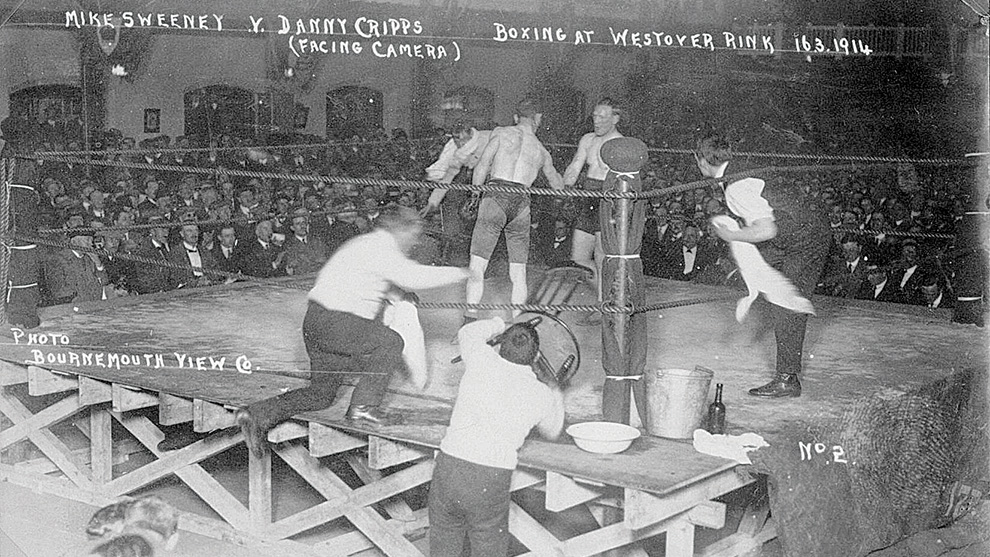BETWEEN the wars, when British boxing was at its busiest, there was no shortage of enterprising promoters looking to make a few pounds by staging professional tournaments, and with regular opportunities for live entertainment hugely limited for the working man, boxing became something of a staple, with tens of thousands of people regularly attending weekly tournaments in all manner of places up and down the country.
In those days there were no leisure centres, or night clubs, or out-of-town hotels that could be used to stage a show, as there are today, and so the promoter had to make the best of what was available. Typically, three types of venue were utilised for this purpose which would make unusual boxing backdrops in 2023. Fight records of a century ago will show them frequently appearing at swimming baths, drill halls and ice rinks.
I mentioned in my article last week that the boxing events at the 1948 Olympics were staged on top of the swimming pool at the Empire Pool, Wembley, and it is easy to forget that so many of those great contests of the 1970s featuring the likes of Finnegan, Minter, Stracey and Magri also took place directly above the pool. When boxing underwent a mini revival at the end of the 1970s, and many more public shows were staged, some of these venues came back into use.
The Gala Baths at West Bromwich was used on five occasions with Tony Sibson, Pat Cowdell and Johnny Owen all boxing there. I well remember going along to the Baths Hall at Darlington in November 1977 to see my old mate Reg Long win the Northern Area light-heavyweight title in a 10-round war with Ralph Green. Both of these venues, like so many others, were demolished in the 1980s.
The iconic York Hall, in Bethnal Green, originally served as a bathhouse and in the years immediately following the second world war, most of London’s public boxing halls doubled up as swimming baths, with Manor Place, at Walworth, Paddington, Leyton and West Ham being typical examples. Plumstead Baths was frequently used, and the accompanying photograph shows the Tipperary boxer Denis Haugh about to commence a contest with Private Smith of the Royal West Kents in 1911, and it can be seen just how precariously the ring has been set up.
The other photograph features Mike Sweeney and Danny Cripps, who boxed each other on around 80 occasions, and they are seen shaking hands at the end of their bout at the Westover Ice Rink in Bournemouth in 1914. Freddie Mills had many of his early contests at this venue, which finally closed in 1991.
Ice rinks were very popular during the Edwardian period when indoor skating underwent a huge boom. The fad soon ended, and Britain was left with a lot of large, empty rinks that were ideal for boxing. The most famous of these was at Streatham, in South London, and thankfully, after being completely refurbished, it is still there. The venue opened for boxing on January 17, 1950, when promoter Stan Baker took up residency there. Stan staged regular shows throughout the 1950s and when he closed his doors for the last time in 1961, he had featured some famous names, including Terry Downes, Dave Charnley, Terry Spinks, Johnny Caldwell and Sammy McCarthy.
Drill Halls came about largely as a result of the first Boer war in 1880, when it was found that many army recruits were unfit for military service. To improve matters, young lads were encouraged to join the Territorial Army and the Drill Halls were where they met each week. Hundreds of them were opened up throughout Britain and, when boxing boomed in the early 1900s, they were ideally suited as venues for the sport to thrive. I can’t say for sure when the last show was held in one of these places but, during the 1920s and 1930s, their use was prolific.
